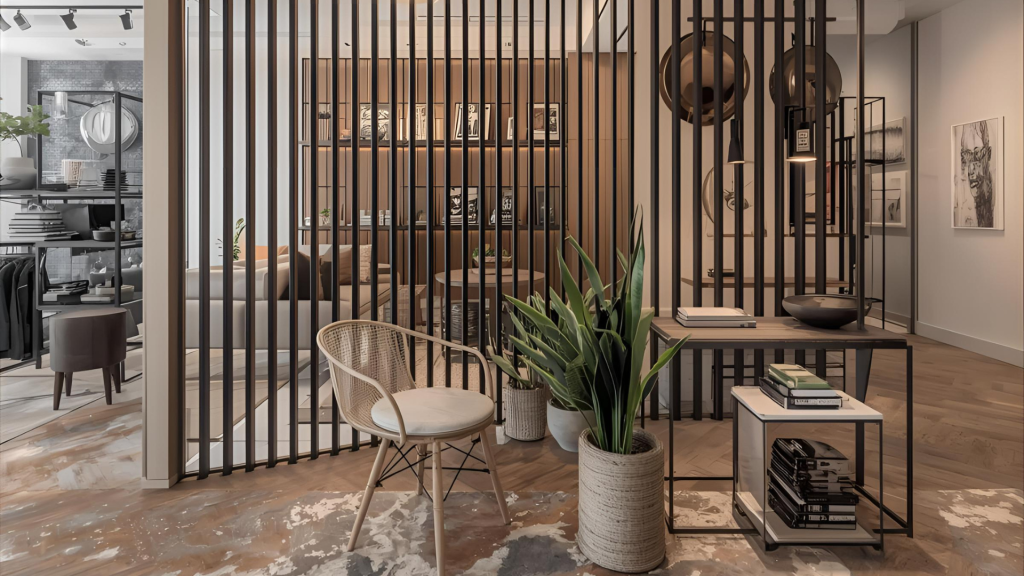In the dazzling theatre of Singapore’s luxury market, the physical store has become the grand stage. E-commerce may offer convenience, but it is the brick-and-mortar boutique that offers the one thing discerning clientele truly craves: an experience. For high-end brands, the transaction is secondary to the transformation—the moment a customer steps across the threshold and is transported into the brand’s exclusive world.
This is the power and purpose of luxury retail interior design in Singapore. It is a highly specialized discipline that goes beyond aesthetics to architect a multi-sensory journey. It is about crafting an immersive environment that is so captivating, so aligned with the brand’s soul, that it fosters a deep emotional connection, turning a visitor into a lifelong aficionado.
Here are the essential principles for designing a luxury retail space that creates a truly unforgettable customer experience.
1. The Store as a Brand Embassy
A luxury boutique is not a shop; it is the brand’s embassy. It is the most potent, three-dimensional expression of its heritage, its values, and its vision. The design must be a flawless translation of this DNA.
- Narrative-Driven Design: Every great luxury brand has a story. The interior design must be the storyteller. For a heritage watchmaker, this might translate into the use of polished dark woods, rich leather, and brass accents that speak of timeless craftsmanship. For an avant-garde fashion house, it could be a minimalist gallery-like space with sculptural forms and unexpected materials that challenge convention.
- The Haptic Dialogue: A Symphony of Textures: Luxury is often communicated through the sense of touch. The haptic experience of a space—the cool smoothness of a marble countertop, the soft resistance of a velvet curtain, the solid feel of a custom-forged door handle—creates a subconscious perception of quality and value. The interplay of these textures is a silent language of sophistication.
2. Choreographing the Customer Journey
The layout of a luxury store is not designed for efficiency; it is choreographed for discovery and delight. It controls the pace, builds anticipation, and creates a sense of intimacy and exclusivity.
- The Decompression Zone: The entrance acts as a deliberate pause, a threshold that separates the bustling outside world from the serene sanctuary within. This area is typically open and uncluttered, allowing the customer’s eyes and mind to adjust and become receptive to the brand’s world.
- Pacing and Revelation: Rather than revealing the entire store at once, a sophisticated layout uses architectural elements—subtle partitions, varying floor levels, or curated pathways—to create a journey. This encourages a slower, more considered pace of browsing, making the customer feel as if they are exploring a private gallery.
- The Destination Point: The journey should lead to a destination, a climactic point within the store. This could be a stunning feature wall showcasing a hero product, a comfortable and secluded lounge area, or a bespoke customization bar.
3. The Art of Illumination: Lighting as the Lead Character
Lighting is the silent narrator of the luxury retail story. It sculpts the space, directs the eye, and makes the product irresistible. A masterful lighting plan is layered and theatrical.
- Ambient Lighting: This sets the overall mood, creating a soft, welcoming glow.
- Accent Lighting: This is the spotlight, precisely focused to make jewelry sparkle, leather gleam, and colours pop with vibrancy. It turns merchandise into treasures.
- Decorative Lighting: A breathtaking chandelier or a series of sculptural pendant lights acts as a piece of art in itself, reinforcing the brand’s aesthetic and becoming a memorable signature of the space.
4. Designing for Exclusivity: The VIP Experience
At its core, luxury is about exclusivity and personalized attention. The design of the store must facilitate this level of service.
- Private Salons and Viewing Rooms: The inclusion of private, invitation-only spaces is the ultimate expression of luxury. These sanctuaries allow for one-on-one consultations and provide a discreet and comfortable environment for high-value clients.
- Hospitality Integration: The lines between retail and hospitality have blurred. Incorporating elements like a champagne or espresso bar, plush lounge seating, and beautifully appointed fitting rooms elevates the experience from a transaction to a social occasion.
The Critical Role of the Turnkey Partner
Executing a luxury retail fit-out in Singapore is an exercise in perfection. It demands an obsessive attention to detail, coordination of world-class artisans and suppliers, and flawless execution under tight deadlines. This is where a turnkey design & build solution is not just an advantage, but a necessity.
An integrated firm like DDA provides a single point of accountability, ensuring that the brand’s pristine vision is translated into a physical reality without compromise. By managing every detail from the initial concept to the final, perfect installation, they allow the brand to focus on what it does best, confident that its embassy is in the hands of master builders.
Ultimately, luxury retail design is the art of making a customer feel seen, valued, and understood. It is about creating a physical space that is as exquisite, rare, and unforgettable as the products it holds.

